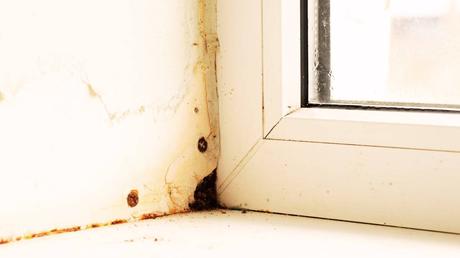
Last Updated on July 14, 2024 by Kravelv
Drywall plays a crucial role in modern construction by providing a smooth, finished surface for walls and ceilings. However, homeowners and builders frequently encounter a common issue: drywall bulges. These bulges often appear unsightly and can signal underlying problems, usually related to moisture. To effectively repair these issues and prevent future problems, you need to understand the sources of moisture behind drywall bulges.
Key Takeaways:- Drywall bulges are primarily caused by sources of moisture like plumbing leaks, roof leaks, poor ventilation, or foundation issues.
- Detect moisture problems through visible signs like water stains, mold, and musty odors, and use tools like moisture meters for diagnosis.
- Regular inspections, improved ventilation, and proper waterproofing are key to preventing future moisture issues.
- Fixing drywall bulges involves addressing moisture sources, drying the area, and repairing or replacing damaged drywall.
Identifying Drywall Bulges
Before diving into the causes of moisture problems, it's important to identify what a drywall bulge looks like. A bulge is a visible protrusion on the surface of the drywall that can appear as a bump, dome, or swelling. It might be accompanied by paint cracks, peeling wallpaper, or soft spots on the wall.
Common Causes of Moisture Behind Drywall Bulges
Moisture is the primary culprit behind drywall bulges, and there are several potential sources. Here's a detailed breakdown of each:
1. Plumbing Leaks
Plumbing leaks are one of the most common sources of moisture behind drywall. These leaks can come from pipes in the wall, ceiling, or floors.
Signs: Look for signs such as water stains, mold growth, or wet spots on the drywall surface.
Detection: To detect plumbing leaks, check for damp spots on the drywall or listen for dripping sounds. Use a moisture meter to assess the extent of water damage.
Solution: Repair the leaky pipes or fixtures. Once the plumbing issue is fixed, remove the damaged drywall, allow the area to dry completely, and replace the drywall.
2. Roof Leaks
Roof leaks can allow water to seep through the roof structure and into the wall cavity.
Signs: You might notice stains on the ceiling or walls, which can sometimes spread to the drywall.
Detection: Inspect the roof for damaged shingles, flashing issues, or other vulnerabilities. A professional roofing inspection can help locate and fix leaks.
Solution: Repair the damaged roof sections. Ensure that the area is dry before repairing or replacing the drywall.
3. Poor Ventilation
Inadequate ventilation can lead to high humidity levels, causing moisture to accumulate behind the drywall.
Signs: Persistent condensation on windows, musty odors, or visible mold growth may indicate poor ventilation.
Detection: Check for blocked vents, inadequate exhaust fans, or poor air circulation in areas like bathrooms, kitchens, or basements.
Solution: Improve ventilation by installing or repairing exhaust fans, adding vents, or using dehumidifiers to control indoor humidity levels.
4. Foundation Issues
Problems with the foundation, such as cracks or improper drainage, can lead to water infiltration that affects the drywall.
Signs: Look for water pooling around the foundation or noticeable cracks in the walls.
Detection: Inspect the foundation for visible cracks and assess drainage systems to ensure they are functioning correctly.
Solution: Repair foundation cracks using appropriate sealants or professional services. Improve drainage by directing water away from the foundation.
5. Exterior Wall Leaks
Water can penetrate through exterior walls due to damage, such as cracks or gaps.
Signs: Water stains on the wall, peeling paint, or efflorescence (white, powdery residue) are common signs.
Detection: Examine the exterior walls for visible damage and check for gaps around windows, doors, and joints.
Solution: Repair exterior wall damage, seal gaps, and ensure proper waterproofing measures are in place.
6. Condensation
Condensation occurs when warm, moist air meets a cold surface, such as drywall, leading to water accumulation.
Signs: You may see water droplets on the drywall or notice moisture-related issues during colder weather.
Detection: Check for differences in temperature between indoor air and wall surfaces. Use a hygrometer to measure indoor humidity levels.
Solution: Address condensation issues by improving insulation, maintaining consistent indoor temperatures, and reducing indoor humidity levels.
Preventive Measures
Preventing moisture issues behind drywall involves both regular maintenance and proactive measures. Here are some strategies:
- Regular Inspections: Perform routine checks of plumbing, roofing, and foundations to catch issues early.
- Ventilation: Ensure that areas prone to high humidity are well-ventilated.
- Waterproofing: Invest in quality waterproofing solutions for roofs, walls, and foundations.
- Moisture Barriers: Use vapor barriers in areas where moisture is a concern, such as basements and crawl spaces.
Repairing Drywall Bulges
Once you have addressed the source of moisture, repairing the drywall is the next step. The process generally includes:
- Removing the Damaged Drywall: Cut out and remove the affected section of the drywall.
- Drying the Area: Ensure the area behind the drywall is completely dry.
- Repairing the Source of Moisture: Address any leaks, cracks, or ventilation issues.
- Replacing the Drywall: Install new drywall, tape, mud, and sand the seams.
- Finishing: Prime and paint the repaired area to match the rest of the wall.
Professional Help
In some cases, it might be best to seek professional help for complex moisture problems. Professionals can provide expertise in identifying the source of moisture and offer solutions for both repairs and prevention.
Final Words
Moisture behind drywall bulges can be a significant issue, but understanding its sources is the first step toward effective resolution. Whether it's plumbing leaks, roof damage, poor ventilation, foundation problems, exterior wall leaks, or condensation, identifying and addressing the root cause of the moisture is essential for proper repair and long-term prevention.
By maintaining your home's plumbing, roofing, and ventilation systems, and being proactive with inspections and repairs, you can manage and prevent moisture issues behind your drywall, keeping your home in good condition.
